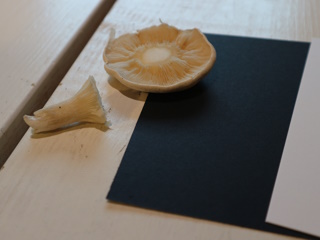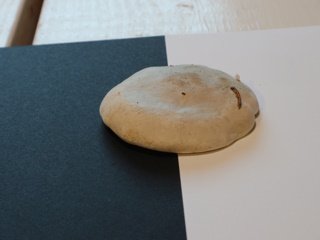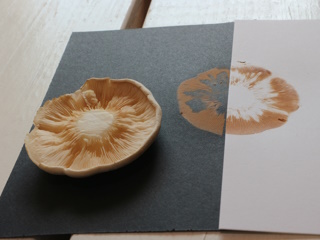How to make a spore print
The spore colour, when observed collectively, serves as one of the most effective methods for helping determine which specific mycological family a specimen belongs to. For instance, the Amanitaeae family is characterized by having whitish spores, the Cortinariaceae family by rust-brown spores, and the Entolomataceae family by pinkish spores, among others. In certain families, there exists a spectrum of spore colours. For instance, within the Russulaceae family, certain genera exhibit whitish spores, while others display yellow or ochre spores. The particular colour of the spore print can help you narrow down the number of possibilities in your quest to identify the specimen to species level.
There are various methods for creating spore prints of mushrooms, but we will describe one simple approach here. To begin, you will need a white sheet of paper, a black sheet of paper, and a fully developed Mushroom Fruiting Body with the stem carefully removed at the highest point. Our approach involves using these contrasting papers, but you can also create a spore print by placing the mushroom on a glass plate and, once the spore print has developed, moving it over a light and dark background, or by using tinfoil.

Start by placing the white and black sheets of paper side by side on a table inside your home. The contrasting colours are necessary to differentiate between the spores that are white and those that are dark. The black sheet will make white spores visible, while the white sheet will reveal darker spores. Next, position the mushroom so that it is half on each sheet, as shown in the picture.

To ensure that the spores drop straight down onto the paper from the mushroom cap, you can cover the cap with a glass or small bowl. This will prevent air currents from carrying away the spores.
After 4 to 12 hours, remove the glass or bowl from the mushroom cap. You should now have a fully formed mushroom spore print on the paper.

Although efforts have been made to ensure accuracy on this website, the information may contain errors and omissions. Therefore, all content provided is for educational and informational purposes only and should not be relied upon or used as a basis for consuming any plants or mushrooms.